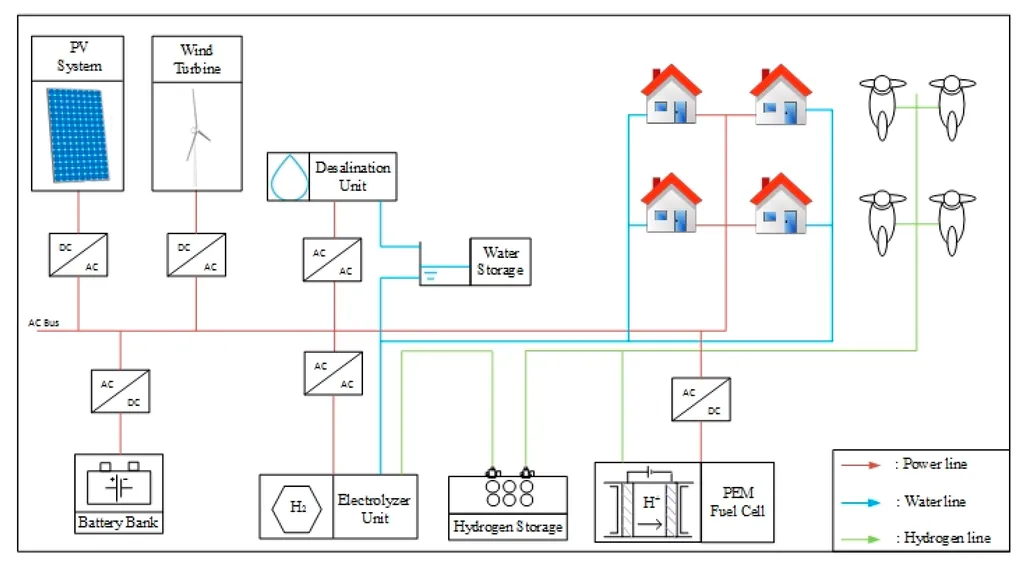In an era where the energy landscape is rapidly evolving towards sustainability, a groundbreaking study from Hao Wu and colleagues at the School of Electrical Engineering, Xi’an University of Technology, has introduced a novel approach to the operational efficiency of multi-microgrids and distribution networks. This research, published in the journal Sensors, presents a collaborative optimization model that could redefine how energy is managed in interconnected systems, particularly in the context of shared energy storage.
The pressing need for efficient energy management has never been more urgent, especially as nations strive to meet carbon peaking and carbon neutrality targets. Wu’s team has tackled this challenge head-on by proposing a multi-body game framework that facilitates the cooperative operation of distribution networks and multi-microgrids. “Our method not only balances the fluctuations of renewable energy but also enhances the economic viability of each microgrid involved,” Wu explained. This dual focus on stability and economics could prove vital for energy providers looking to incorporate more renewable sources into their portfolios.
The research unfolds in two distinct stages. Initially, a multi-objective optimization model is established, aimed at configuring shared energy storage among various microgrids. This model effectively smooths out the variability associated with renewable energy sources while minimizing operational costs. The results from this stage feed into a second phase, where a game-theoretic approach is employed. Here, the distribution network acts as a leader, while the multi-microgrids and shared energy storage function as followers. This hierarchical structure not only fosters collaboration but also ensures a fair distribution of benefits among all parties involved.
One of the standout features of this research is the introduction of an improved Shapley value method for cost allocation. By measuring the contributions of each microgrid based on their interactions, this method offers a more nuanced understanding of how benefits can be equitably shared. “This improvement allows us to reflect the individual advantages of microgrids, which is crucial for fostering cooperation in energy trading,” Wu noted.
The implications of this research extend beyond theoretical advancements; they hold substantial commercial potential. By optimizing the use of shared energy storage, energy providers could significantly reduce their operational costs. The study reports savings of up to 44.89% in capacity limits compared to traditional methods. Such efficiency gains could encourage more businesses to invest in shared energy storage solutions, ultimately accelerating the transition to a low-carbon energy future.
As the energy sector grapples with the complexities of integrating renewable sources, Wu’s work stands out as a beacon of innovation. The model’s capacity to enhance resource utilization while ensuring economic fairness among stakeholders could pave the way for more resilient and adaptable energy systems. Looking ahead, the research team aims to refine their algorithms and explore alternative methods for measuring microgrid interactions, promising even greater advancements in energy optimization.
This study not only contributes to the academic discourse but also serves as a practical guide for industry players seeking to navigate the complexities of modern energy management. With its potential to reshape operational strategies and drive down costs, Wu’s research could very well be a catalyst for the next wave of energy innovations.




